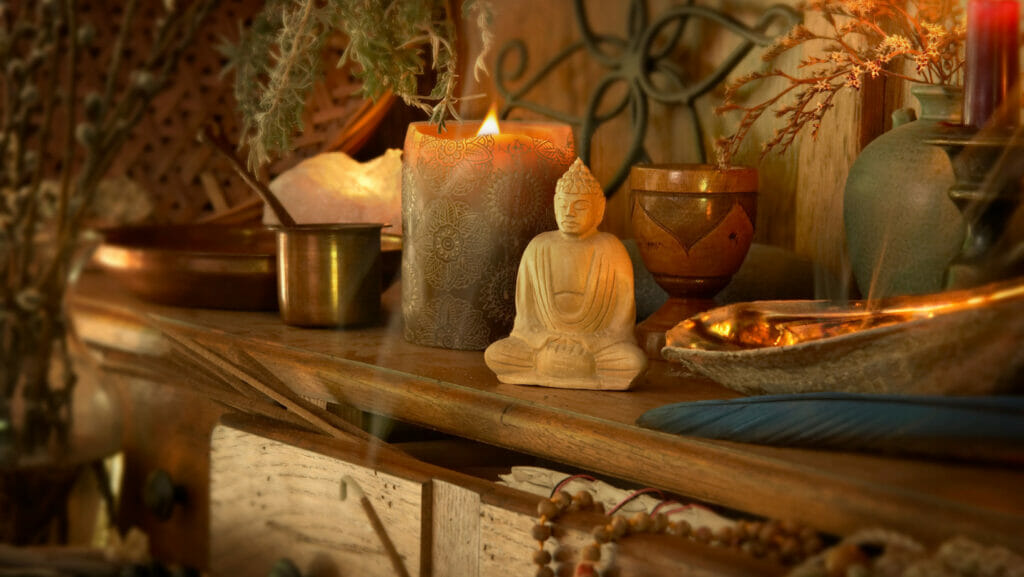
Including an altar as part of your practice can be an important tool in living with intention. Patanjali teaches us in the Yoga Sutras about the practice Ishvara Pranidhana which teaches us that if we are able to completely surrender our individual ego identities to God (our own higher self) we will attain the identity of God. If we can dedicate our lives to serving the God that dwells within all other beings, human and non-human alike, we will move beyond all feelings of separateness. An altar is a safe and sacred place you create for yourself that holds inspiration and gives you the opportunity to surround yourself with objects and images that motivate and inspire you. These objects can represent your path to self-realization. Whether you are meditating, practicing yoga, chanting or simply pausing in front of your altar, it serves as a reflection of your own spiritual journey, a reminder of compassion, discipline, gratitude and mindfulness. It doesn’t have to be from a religious point of view. It is the place we come to pray and thank God for all the gifts in our life and all the things to come, this is Puja. We honor our connection to God, however that comes up for the individual, and to our divinity and connection to each other. It can even be doing your practice at a certain place in your home, like in front of a window facing the sun. There really are no limitations for setting up an altar.
The most important thing is to create an altar that is authentic to you. Here are some items you may include in your altar:
- Deity or Avatar – This can be a manifestation of God that resonates with you or possibly a childhood symbol that connects to ancestors.
- Sage or sound instruments can be used to clear the spiritual energy around the space before you begin your practice. (If you use sage, please take extra care to make sure it is put out completely, maybe even run some water over it.)
- Candles or incense are a good way to invite ancestors in and add a fire element to your ritual.
- Mala or rosary beads for counting your recitation of Mantra or affirmations.
- Offerings of flowers, money or food can be included and selected based on your intentions. Remember, the offerings do not have to be directed towards a deity, they can be offered up to universal consciousness or peace in the world for example.
- Books and/or oracle cards are important if you want to include scriptures in your ritual or connect to your current energy and to guide your day to day decisions.
- Crystals or stones that support your practice can remind you of your intentions and add color and character to your altar.
- Altar Base- You can choose a special piece of furniture or cloth as the base for your altar. For example, an end table or chest that may have been passed down for generations can serve as your altar base and represent your family.
You may choose to have an altar at home, work, or anywhere else you could use support for your practice and spiritual awakening throughout the day. Yoga symbols may even be kept in your vehicle. Michelle Young, lead teacher trainer and CEO of My Vinyasa Practice has Yoda as one of her Avatars on her office altar. She states it reminds her of her childhood and parents, allowing her to feel the connection. Your altar may change from time to time throughout your journey, aligning with your intentions at the current moment. Let this happen and let your altar be a blessing and support to your individual needs. When your practice is supported, then you are able to support others and ultimately uplift the entire collective!
